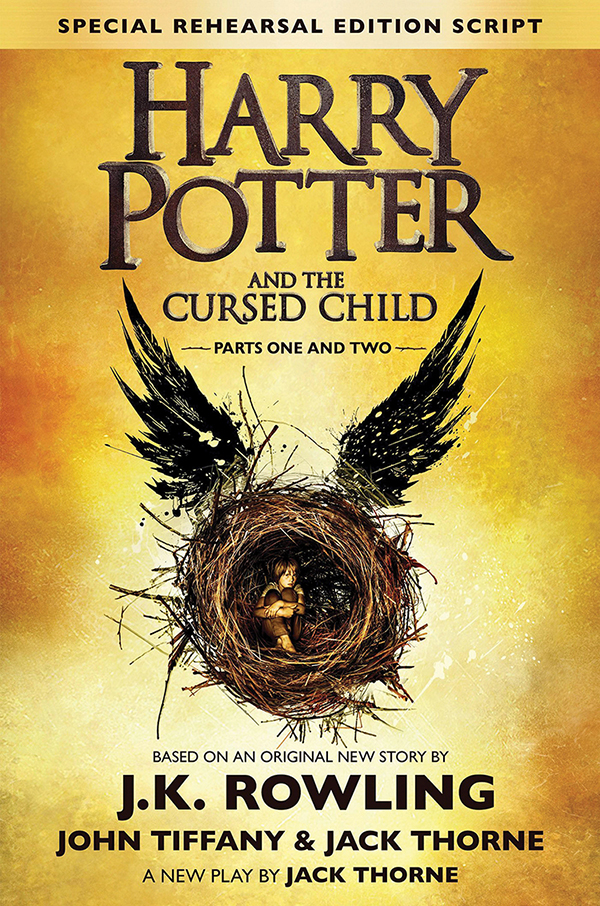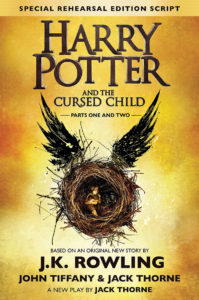By Laura Carr
Palisades News Intern
Harry Potter made his comeback on July 31 in a new play written by Jack Thorne, based on an original new story by Thorne, J.K. Rowling and John Tiffany. The script, Harry Potter and the Cursed Child, was released as a book the day after the play’s premiere at the Palace Theater in London.
Having gone to every Harry Potter midnight release party at Village Books as a child, I decided to visit the Barnes & Noble party in Santa Monica on the night of July 30. There wasn’t nearly as much fanfare surrounding Cursed Child as there had been for the other Harry Potter stories. I had already pre-ordered the script on Amazon, so my attendance at the party was simply a way to re-live the “glory days.”
I proudly donned my Hogwarts sweatshirt and strolled confidently into the store’s second-floor event space—only to be met with curious stares from a large group of elementary and middle school-aged children. I was the oldest person in the room who wasn’t a parent, chaperone or Barnes & Noble employee. The event paled in comparison to the parties that Village Books used to throw for each new book in the series.
Harry Potter and the Cursed Child made me miss Village Books and my childhood. Every memory I have of Harry Potter is a fond one, from the palpable excitement in the air as midnight approached during the release party, to the rush of adrenaline that came from cracking open the latest installment. Even now, when I begin my annual re-reading of the series, I still get that feeling.
I didn’t have that feeling when I settled down to read the script on Aug. 1, although, to be fair, reading a script is much different than reading an actual book. In the canonical book series, you get a sense of Harry’s emotions and the inner turmoil he feels. There are colorful descriptions of the wizarding world. Scripts are dialogue with brief stage directions that rely on the actors to bring the story to life; as a result you are constantly reminded that it is not real. Still, I zipped through the script in one sitting, and I enjoyed it. The play focuses on Albus Severus, Harry’s middle son, who is introduced in the epilogue of Deathly Hallows, and his close friendship with Scorpius Malfoy, Draco Malfoy’s misfit son. Albus is eager to show that he is more than just Harry Potter’s Slytherin son, and chaos ensues when he tries to change time to right what he views as the wrongs that Harry committed in his youth.
I got a vivid sense of Harry’s tense relationship with Albus, and it was nice to see Draco work together with the original trio (Harry, Ron and Hermione). Professor McGonagall is a constant presence in the story, which was nice.
However, the story lacked many of the characters who were written about in the epilogue. I wondered what happened to Teddy Lupin, the orphaned son of Remus Lupin and Tonks, and how Neville Longbottom and Luna Lovegood were faring. James Sirius and Lily Luna, Harry and Ginny’s other children, are featured only briefly in the story. Despite Rowling’s Twitter activity over the years that suggested she would have liked to make changes to the character relationships, she doesn’t, which was a relief.
At 308 pages, the script is an easy read, and a nice second epilogue to the original books. It’s easy to imagine Daniel Radcliffe, Emma Watson, Rupert Grint and Tom Felton stepping back into their roles as you read through it, and it left me wishing that I could see the play on London’s West End. Sadly, it is sold out midway through 2017.
Cursed Child didn’t change how I felt about Harry, Ron and Hermione. It certainly didn’t feel like much of a continuation of Harry’s story, but it definitely stands on its own as an outstanding spinoff of the Harry Potter universe. It is worth the read.
(Laura Carr is a senior at Denison University in Granville, Ohio.)













You must be logged in to post a comment.